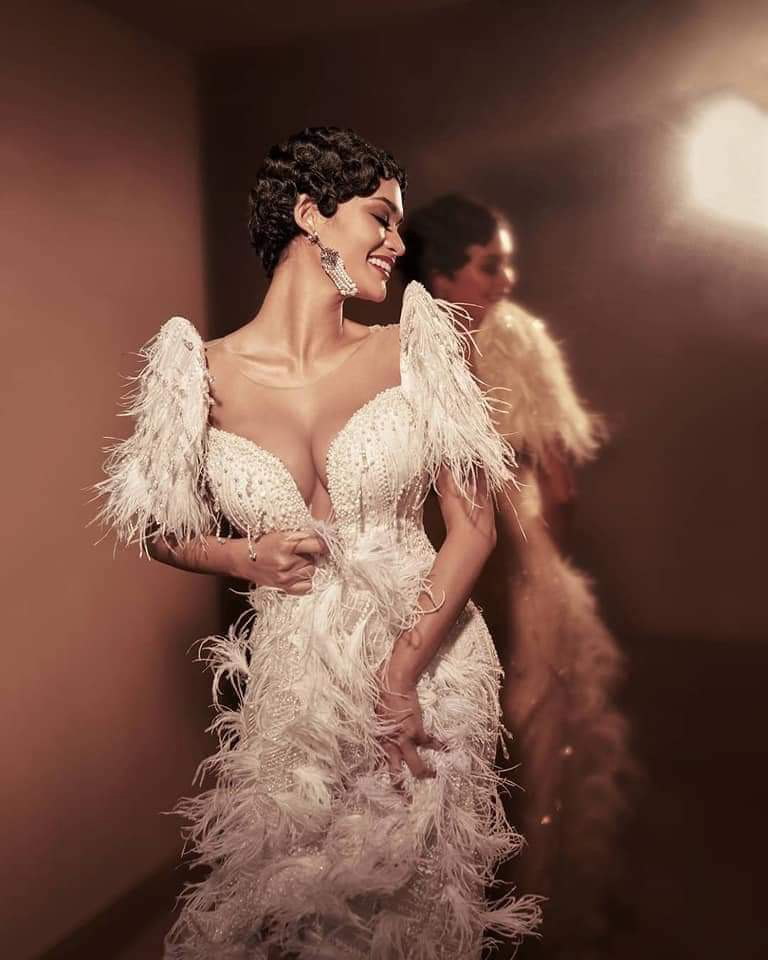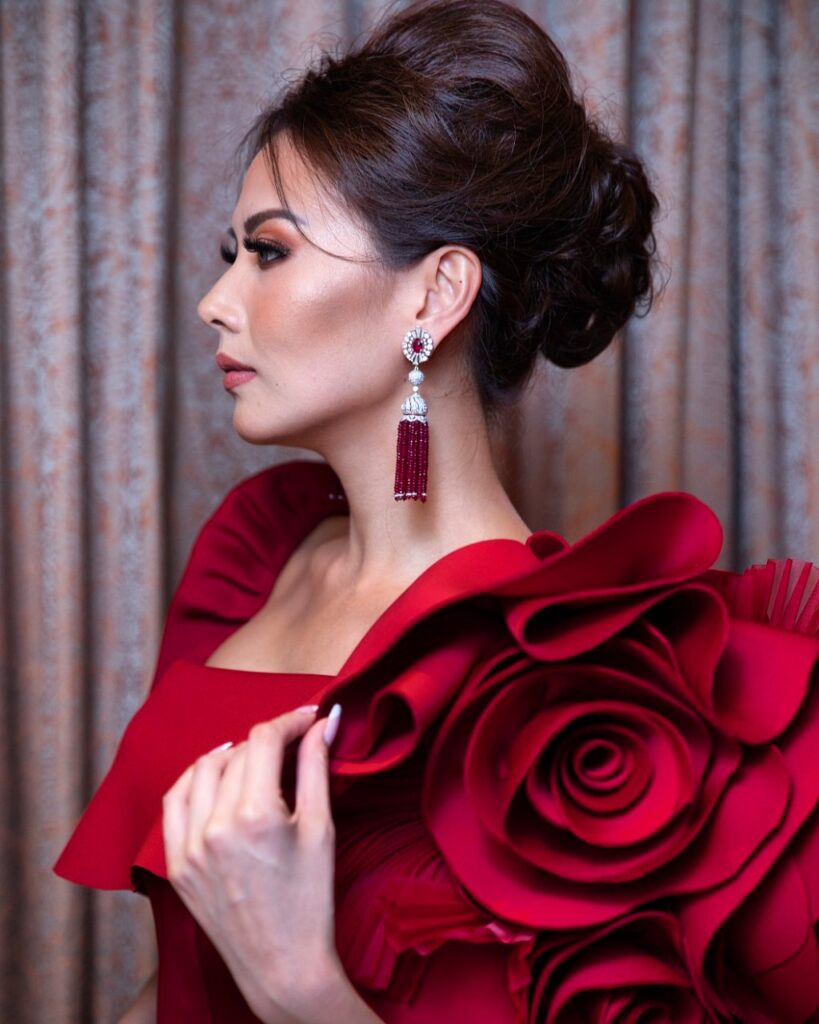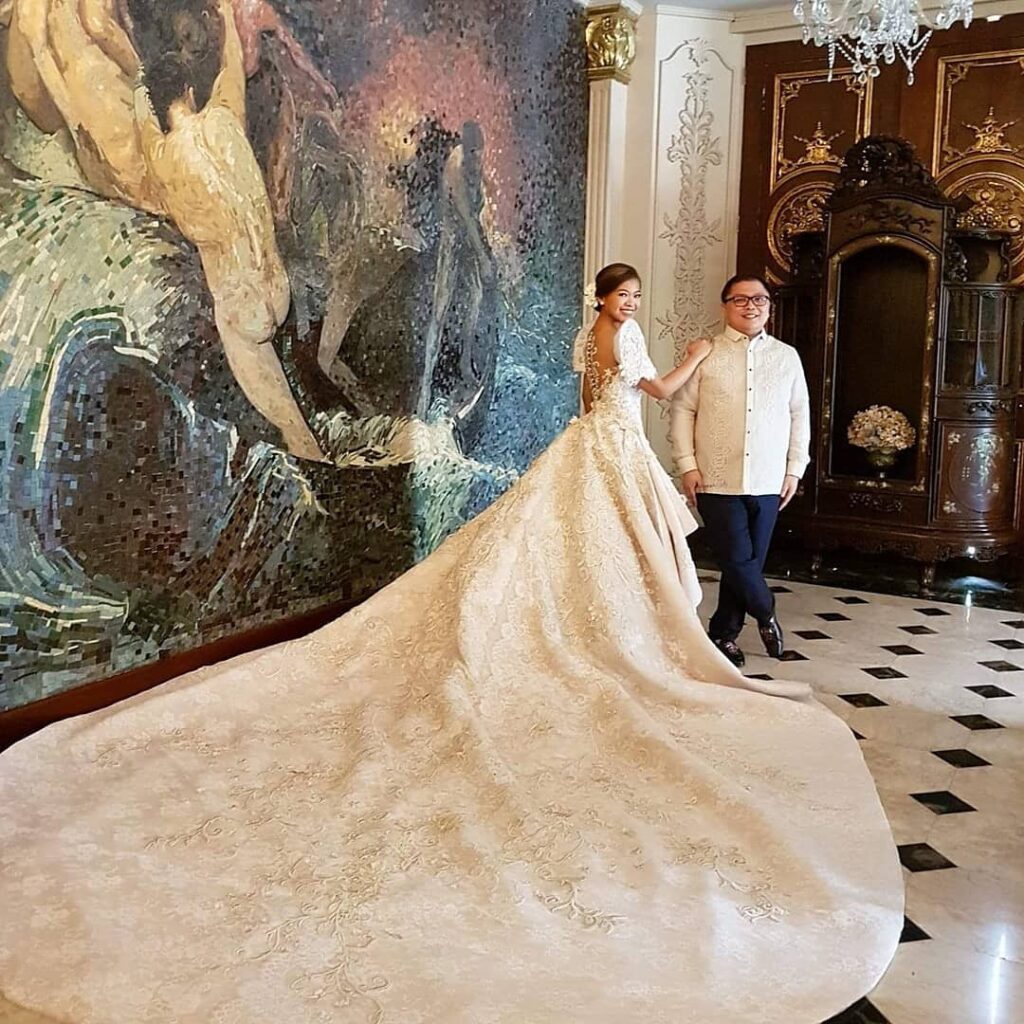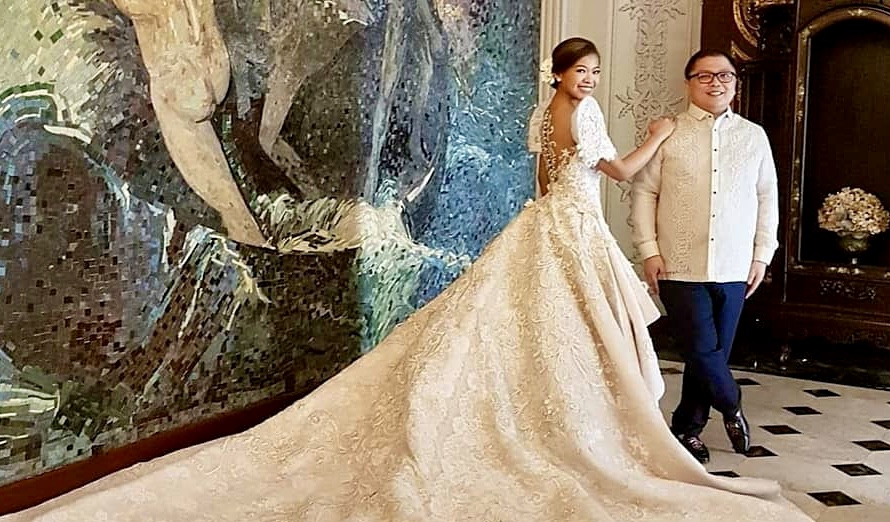Like most Filipino designers, he isn’t averse to giving the terno a fresh take. But he draws the line at reinventing the terno’s sleeves beyond recognition, often in a misguided attempt to make the national dress more “modern and wearable.”
By Alex Y. Vergara
As the country’s national dress, the terno has gone through countless series of reinterpretations over the decades—from ankle-length to knee-length, solid colors to multicolored versions combining two or more materials, blouse-and-skirt ensemble to variations of the Western-style pantsuit. You name it! Throughout all these metamorphoses, one thing remains, which makes the terno unique and distinctly Filipino—its iconic butterfly sleeves.
Yet even after 13 years in the business, Bulacan-based designer Jo Rubio would still sometimes find himself “educating” clients on the need to maintain the proper size and form of the terno sleeves. For him, reinventing the terno’s sleeves in the mistaken notion of making the entire look more modern and wearable is tantamount to disrespect for one of the country’s most cherished national symbols.
“For me, making the sleeves too small or the shape too unconventional defies the essence and tradition behind the terno,” he says over email.


‘Culturally muddled’
He decries, for instance, moves made by certain designers who, in their desire to be called edgy, resort to French-inspired leg of mutton sleeves and passing them off as terno sleeves, leaving everyone, especially the young, “culturally muddled.”
“It would only confuse a younger generation of Filipinos,” he says. Such attempts at misplaced reinvention involving an identifiable element of the national dress could also be used as a license by future designers either out of ignorance or, for all the wrong reasons, to impress.
But make no mistake about it. The designer, who describes himself as a “romanticist” for being partial to feminine details like sculpted roses, beads, embroidery, froufrou and, in his words, “structured draping,” isn’t at all averse to giving the terno a fresh take.

Over the years, for instance, the designer, who maintains a design studio in Makati, has done various versions of the terno—from floor-sweeping numbers to tea-length creations that graze their wearers’ knees or fall just an inch or two below them.
From unembellished ternos done in solid shades that emphasize clean, impeccable fit and construction, the type that first caught this writer’s attention when worn late last year by Miss Universe 2020 hopeful Alaiza Malinao in the pageant’s evening gown competition, he has also produced either heavily embroidered or embellished masterpieces designed to beguile and dazzle the eyes.
Heart of the matter
“The terno I did for Heart Evangelista-Escudero, which she wore to the SONA (State of the Nation Address) in 2017, was one of most admired creations I did,” Jo shares with pride. It wasn’t anything heavily embellished that required an army of sewers to finish. On the contrary, the designer describes it as a clean, minimalist take on the national dress that relied simply on strategic draping to achieve just the right visual drama.
“I consider that piece a fresh take on our iconic terno,” he says. “For some reason, what I did made the terno young and relevant again in the eyes of women who reached out to me. That single dress elicited strong interest among Filipino women, young and old. Surprisingly, the look even translated into bridal wear requests. It also became a source of inspiration for Filipino women and even foreigners based abroad who were thinking of walking down the aisle.”
Although Jo, who took up fashion courses at La Salle College International after finishing Hotel and Restaurant Management at the University of the Philippines, is steeped in Western design sensibilities, he’s also quite open to using some of the country’s indigenous fabrics. This he consciously does primarily as an advocate of cultural heritage.
“Currently, for instance, my team and I are experimenting on printed luxe fabrics, which we are trying to combine with our country’s local fabrics like piña and other indigenous woven textiles,” he says. “We also try to mix and match imported and locally made fabrics, and incorporate embroidery and beadwork by our skilled artisans.”
Apart from making his ternos more interesting and modern by resorting to such moves, he is able to help keep the country’s craftsmen and artisans gainfully employed and their skills and design traditions alive.
“It goes beyond what we can do with the terno,” says Jo, who loves to keep his team small to enable him to focus on the quality of each member’s work. “Giving it a fresh take also means giving job opportunities to fellow Filipinos while paying homage to our heritage and culture.”
Ultimate no-no
So, what could be the ultimate no-no for Jo when it comes to fashioning a terno, apart from making its sleeves almost unrecognizable?
“If we are to remove the terno’s sleeves, our Filipino dress would already look like a Western dress,” says Jo. Apart from keeping this particular element integral to the terno, Filipinos should also take their cue from the Japanese, Koreans and Chinese, he adds.
“They’ve managed to keep the look and cut of their kimono, hanbok and cheongsam while reinterpreting them using modern fabrication. I admire how these cultures posses a deep sense of appreciation and reverence for the traditional appearance of their respective national dresses.” Filipinos should also endeavor to do the same.








